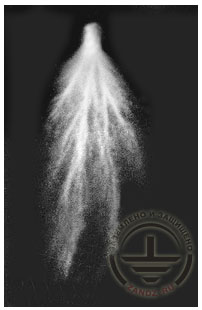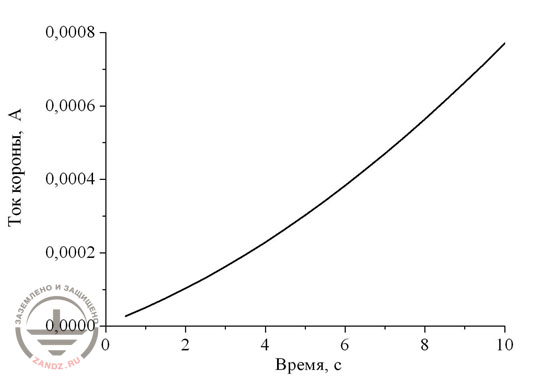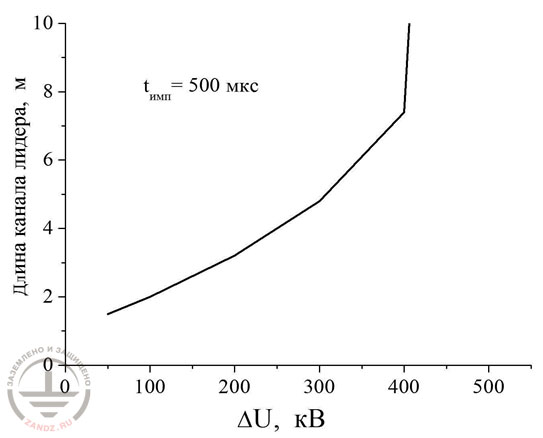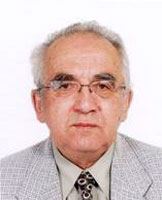For a more detailed understanding of the very essence of lightning protection, a specialist must clearly represent the course of the process itself, and it especially concerns the development of a counter leader. Thanks to the understanding of its essence, it is possible to create the most effective, but at the same time, simple solution for organizing lightning protection. The information below briefly describes the gas discharge phenomena in the counter discharge, as well as an explanation of what is lightning protection with the early streamer emission system.
Lightning protection - one of the engineering disciplines, where a specialist cannot do without a clear idea about the physics of the process. It majorly concerns the development mechanism of a counter leader, with which the search of simple technical solutions to improve the protection against direct lightning strikes is naturally connected. Below is a brief overview of the discharge phenomena in a counter discharge.
Streamerless corona
This phenomenon occurs at the achievement of the critical value (ECor) of the strength in the upper part of the radius (r0 E (r0)) of the lightning rod or any other grounded structure, which leads to the emergence of an independent discharge in an atmosphere consisting of a thunderstorm cloud with an electric field steadily growing inside it (E0).
The most relevant and frequently used formula used to estimate the value of ECor, is the empirical formula of Pick. Given the nominal level of atmospheric pressure and the presence of a rod electrode, this formula is presented in the following form:

and is true, for a unit of measurement of the electrode radius specified in centimeters. This is applicable for an electric field exceeding the value of 30 kV / cm (3000 kV / m), which is substantially greater than the magnitude of the electric field at the surface during a thunderstorm (E0). The average figure is usually not more than 30 kV / m, and the maximum indexes are usually higher than 60 kV/m.
According to the assertions, the unrestricted corona arises because of the local amplification of the field (y) in the upper part of the conducting ground structure. The most accurate calculations for a rod-type electrode offer the following formula:

At a heigh h equal to 20 meters and a radius of r0, which is 1 centimeter, the voltage in the field of a thunderstorm cloud located directly at the top of the rod lightning rod will be increased threefold. In this case, the corona discharge is able to be excited at an electric field value in the air of an average 1 kV/m.
The value of the field decreases significantly as it moves away from the top of the grounded structure. Consequently, the area of ionization is rather small, is only several millimeters. Even with an increase in the value of the field E0, the area of this zone increases slightly. Moreover, this process absolutely does not coincide with the process that takes place in the formation of the plasma channel of the counter leader, which was represented by Gold in his hypothesis.
The explanation is easy enough. The advance of the plasma channel upward relative to the lightning conductor occurs only at the expense of an increase in the electric field in the upper part, and to achieve this, a very high level of electric conductivity of plasma is required, which is ensured by a high electron density. In this case, the counter leader channel is growing during several hundred of microseconds, while the electron in the cold air is viable for not more than 1 microsecond.
Streamer corona
A distinctive feature of this electric discharge is the presence of fairly long and thin branches, which appear after the ionization wave of the atmosphere. The branches originate from a common short stalk through which a voltage flows, which is the sum of all voltages in the discharge branches. As the measurements show, when the voltage required to increase the temperature of the branches is insufficient, they do not heat up and reduce the conductivity in a time equal to 10-7 s, but the total strength of the current passing through the main stem often reaches a value from one to several tens of amperes. This value is usually enough to raise the temperature of the stem to the desired value.

Figure 1. Image of a streamer's corona*
For its formation, the streamer corona requires the presence of a definite current strength sufficient to ensure the development of the ionizing wave through the discharge gap. Based on the analytical data, we can distinguish the following formula, which allows calculating the value of the limiting current for a rod with a radius of the upper part r0

μi in this case means the mobility of the prevailing variety of corona ions. To form a streamer corona, a current of 10-2 A is required, provided the standard radius of the upper part of the rod is standard, which in practice is not achievable for a corona located in the electric field of a thunderstorm cloud.

Figure 2. The chart of the change in the lightning current from the top of a vertical electrode 50 m high*
Figure 2 shows the index of changes of the corona current value with time, formed near the rod about 50 meters in height. There is a maximum rapid increase of the field in a thunderstorm cloud with the voltage directly on the ground equal to E0=50 kV/m in 10 seconds. However, even with a direct dependence of the corona current on the rate of increase of the electric field with the maximum permissible values for measuring the amplitude, the peak value of the current in any case turns out to be less at least to an order of magnitude.
Quite an interesting solution to this problem is offered by a variant of external influence on this process, thanks to which it is possible to convert the corona into a streamer form. Moreover, the solution of this problem is quite simple - the solution is that the jumpwise increase in the potential of the upper part of the electrode with the capacitance Ctip, the value equal to ΔU will lead to a sharp jump in the corona current, according to the following formula:

The equation explains in detail that the value of the peak current icr wll be achieved at the application of voltage with the steepness of the front to the active lightning rod.
Growth process of the counter leader
The majority will find that information given above strange, given the fact that such a concept as active lightning protection is not acceptable for the author. However, the basic principle on the basis of which ese-lightning rods, is based on the control action small in magnitude. Therefore, do not make too hasty conclusions and hurry with the final decision - for starters it would be good to understand the further development of the counter leader after its formation.
Do not go deep into the very moment of the leader's formation, only imagining that it appeared on the stem of the streamer branch, and simulating the process of its appearance using a computer. Naturally, its physical model will help in this - its description can be found in the book "Sparke discharge" from 1997, by E. M. Bazelyan and Yu. P. Reiser, and the material "Physics of Lightning and Lightning Protection", released in 2001. All the necessary information can be easily obtained from the literature listed above, and it is pointless to give excerpts from it in this article, it will be sufficient to use only the basic indicators of the viability of the process.
With an electric field strength (EL) in the leader channel, which does not exceed the value of the field strength in the thundercloud (E0), the leader's progress will pass without braking. That is, for an accurate calculation of the model, it is necessary to obtain the value of the current at each moment of the evolution of the counter leader, the linear resistance in the plasma channel, and, using their multiplication, to reveal the strength of the longitudinal field (EL). After that, the resultant value must be compared with the value of the field of a thunderstorm cloud, in determining which it is necessary to take into account the index of the effect of the volumetric charge of the corona released into the environment. For a more detailed analysis of the situation, a number of very time-consuming calculations were carried out with the help of a computer. The calcultations were with various parameters of the height of the corona structure, the characteristics of the lightning field, the duration of the corona, and the main parameter - the value of the control voltage pulse. The chart below shows the averaged results.

Figure 3. The magnitude of the channel of the counter leader, depending on the amplitude of the control voltage*
Based on the revealed relations shown in Figure 3, it turns out that the maximum value of the channel of the counter leader depends on the amplitude of the control voltage (ΔU), exciting it. This calculation is carried out on the condition that the ese lightning rod is about 50 meters in height with a hemispherical head installed,and the radius of 2 cm (it has been determined that this index practically does not play any role). A linear increase in the electric field in the thunderstorm atmosphere to the value of E0=50 kV/m in 10 s, which is close to the threshold value.
In this case, the control pulse of 500 μs was applied when the value of the field E0 achieved its maximum. It is noted that with a supply voltage of up to 300 kV, the counter leader is not able to increase itself by more than five meters. As a result, there are quite considerable doubts about the practicality of using this method.
Nevertheless, at the voltage of about 400-500 kV, the ability of the counter leader to be significantly advanced above the upper level of the corona space charge and to move without braking is observed.
* - illustrations are taken from the article of prof. E.M. Bazelyan "Are active lightning rods active?"
See also:
- A series of articles on lightning protection for beginners
- The book "Questions of practical lightning protection"
- Equipotential bonding system
Related Articles:
 Lightning protection of residential and public buildings - answers to frequently asked questions in the design
Lightning protection of residential and public buildings - answers to frequently asked questions in the design
 Lightning Protection of Large Territories: Parks, Grounds, Plant Territories. Page 1
Lightning Protection of Large Territories: Parks, Grounds, Plant Territories. Page 1
 Lightning Protection of Large Territories: Parks, Grounds, Plant Territories. Page 2
Lightning Protection of Large Territories: Parks, Grounds, Plant Territories. Page 2
 Lightning Protection of Large Territories: Parks, Grounds, Plant Territories. Page 3
Lightning Protection of Large Territories: Parks, Grounds, Plant Territories. Page 3

